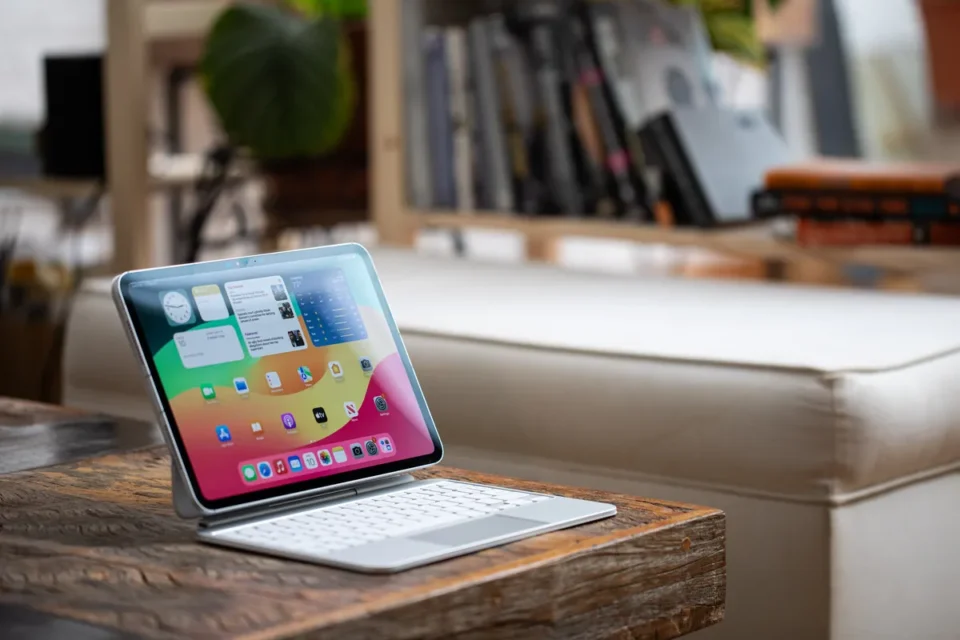The latest iPad Pro is a remarkable feat of tablet design, pushing the boundaries of what a tablet can be. It’s so thin and light that it’s almost imperceptible, with a USB-C connector that feels almost bulky in comparison. The 13-inch model I’ve been testing exemplifies this ultra-thin, high-performance approach, though it’s not entirely clear how Apple could make it even slimmer.
Despite its impressive hardware, the iPad’s real challenge has always been its software. While the iPad has consistently excelled in terms of speed, weight, and battery life, its potential has often been limited by Apple’s restrictive operating system. This has prevented the device from fully evolving into the versatile computer many users have wished for.
Apple positions the iPad as a versatile tool, emphasizing its ability to be used in bed, for drawing, and for mobile gaming. The company sees the iPad’s adaptability as a key feature, even if it means not excelling in every single aspect. Apple envisions the iPad Pro as a forward-looking device, equipped to handle future advancements like AI, though these features are not yet fully realized.
The 2024 iPad Pro seems like both a culmination of the device’s evolution over 14 years and a step forward into a future where it’s not entirely clear how it will fit. It feels like a piece of future tech constrained by current software limitations, but it’s undeniably impressive.
A Sleek Marvel
My review unit is a high-end 13-inch model with 1TB of storage, 16GB of RAM, and cellular capability—totaling $2,099. With the addition of the $129 Pencil Pro and the $349 Magic Keyboard, the setup costs $2,577, comparable to a premium laptop. However, the entry-level 11-inch model starts at $999 with 256GB storage and 8GB RAM. Though still pricey, the 11-inch variant is more affordable, and the base storage has been doubled compared to previous models.
Regardless of the model you choose, the key upgrades include the new chip, display, and design.
Chip Performance
The iPad Pro now runs on Apple’s new M4 chip, designed specifically for this model’s enhanced display and overall design. Benchmarks show about a 50% performance improvement over the previous M2 model, though real-world use feels less dramatic. The M4 makes app transitions smoother, games like Call of Duty: Warzone Mobile run flawlessly, and video editing in iMovie is notably faster. While the difference in everyday tasks might be subtle, intensive applications benefit from this performance boost. The device remains cool to the touch, with only minor warmth during extended use.
Top-tier models with 1TB or 2TB storage feature an extra performance core in the M4 chip, though the difference in everyday use might be negligible.
Display Excellence
The new iPad Pro boasts an impressive OLED display, utilizing a “Tandem OLED” setup that merges two OLED layers for a sharper, brighter screen. Apple calls this Ultra Retina XDR—an extravagant name for a display that lives up to its hype. The OLED panel delivers deep blacks, vibrant colors, and remarkable brightness, outperforming the new Air’s display. However, the OLED does pick up more glare and reflection than the Air’s LCD, requiring higher brightness levels in bright conditions. Despite this minor drawback, the display quality remains exceptional, and battery life does not significantly suffer at higher brightness.
Refined Design
The design of the new iPad Pro is more of an evolution than a revolution. At just 5.1mm thick for the 13-inch model and 5.3mm for the 11-inch, it’s the slimmest iPad to date. The reduced weight—about a quarter pound lighter than the previous model—makes it surprisingly easy to handle, even though its large size initially seemed cumbersome. The build feels delicate but has proven to be durable.
One major design improvement is the repositioning of the front-facing camera to the center of the long side, making it more practical for landscape use. While the camera quality itself is average, its new placement enhances its utility.
Feature Upgrades
The new iPad Pro may be overkill for users who need a simple device for basic tasks like emailing or web browsing. For these users, the standard Air or base iPad might be sufficient. However, for those who utilize iPad-specific features like digital sheet music, note-taking, or media editing, the Pro offers significant enhancements.
New features include the upgraded Pencil Pro, which introduces a convenient squeeze gesture for quick menu access and customizable app interactions. The Pencil’s Barrel Roll function allows artists to adjust their virtual tools by twisting the stylus, enhancing creative control.
The new Magic Keyboard is another highlight, offering a full keyboard and trackpad that transforms the iPad into a more laptop-like experience. The updated model is sturdier and lighter than before, making it a more comfortable accessory for extended use.
In summary, while the 2024 iPad Pro represents the pinnacle of tablet innovation with its cutting-edge hardware and design, it still faces limitations due to software constraints. It’s a fantastic device for those who can leverage its advanced features but might be overkill for more casual users.

